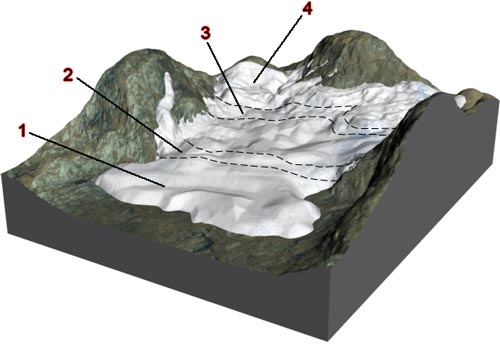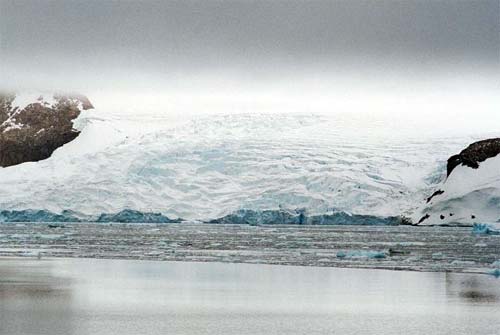Glacial ice
A glacier begins when snow doesn't completely melt away during the summer. Each winter new snow falls on top of the old snow. Thick layers of snow are gradually compressed into glacial ice.
The formation of glacial ice depends on more than just cold temperatures. In dry areas, such as Antarctica, it can take hundreds or even thousands of years for enough snow to accumulate to form ice. In wetter places it might only take a few tens of years because snow and rain are continually being added.
Glaciers are divided into an accumulation zone and an ablation zone along an equilibrium line. Above the equilibrium line the glacier is able to grow because snow and ice survives the summer melt season. Below the equilibrium line the glacier loses more ice than can be replaced by the winter's snowfall.

Click to view larger and see the legend.
Diagram showing zones of a glacier
- Zone of wastage
- Crevasses
- Snowline
- Zone of accumulation
As soon as snow falls, the crystal structure of each flake begins to change. A combination of pressure from overlying snow and water  from rain or a partial thaw causes individual crystals to change shape and grow larger and larger.
from rain or a partial thaw causes individual crystals to change shape and grow larger and larger.
Over time light and fluffy snow is transformed into granular firn. Compaction and crystal growth continues and the firn is transformed into dense glacial ice.
« Back 













